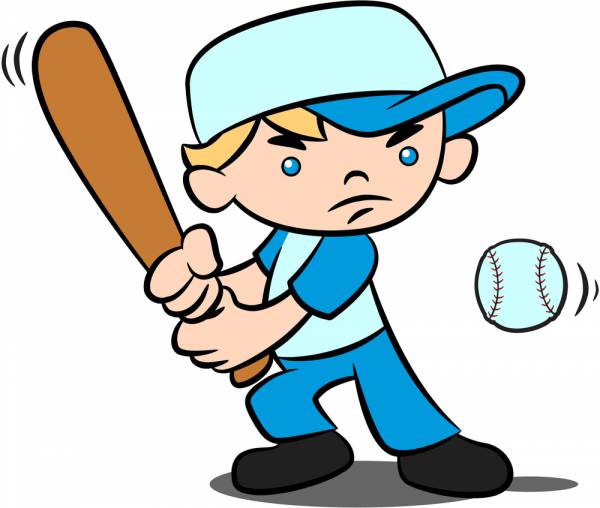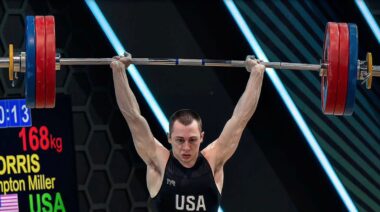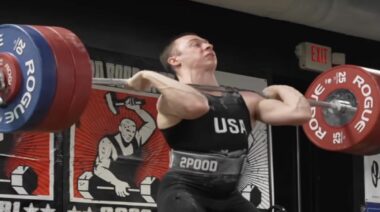We all have been taught from our earliest days that we must work on our weak points. This is true no matter what our endeavor, whether it be our school work, our job, our relationships, or of course, our sport training.
In school you may be a science and math whiz, but you are told you still need work on your English skills. If you are on the artsy side, you are told to brush up on your math and chemistry, whether you like it or not. And we certainly know what teachers try to drum into phys-ed jocks.
What Happens When You Only Work on Strength
In the early days of your weightlifting careers you will also be told to work on all aspects of your training, not just your favorite ones. Often, we will see athletes who love to work on their strength exercises, but have a tendency to shirk their technique work. Occasionally, we see the reverse, but it’s usually the former. Strength is developed relatively easily if we just load enough weight on the bar. Technique takes more time, and is characterized by more errors. Because of that, you tend to do what brings the most satisfaction. Squats and pulls take priority.
The unsoundness of this philosophy is soon revealed when you enter a competition. The lifts may be pulled up with plenty of power, but the bar goes anywhere except where it should. It may go back over your head, or it may fall well in front of you, as you try in vain to find the proper groove. I can remember us telling a fellow lifter that “Your snatches are like snowflakes.” The lifter would then scratch his brain wondering what his snatches had in common with a drop of hexagonal crystallized water. By way of explanation we would then explain, “…because no two are alike.”
Consistency is Key
The primary requirement for success in any activity is consistency. As you can imagine, the more practice, the more consistency. We hear a lot about the 10,000 hours needed to become an expert at any activity. This may not be true for some activities, but I think you get the idea. You have to practice anything to get the movement down.
There are a number of good examples we can use here. Let’s look at baseball. Lots of people could swing a bat just as hard, or maybe even harder than Barry Bonds. But swinging and connecting in any consistent manner is another thing altogether. Take the average baseball fan out of the stands, have him try and hit a ninety mile-an-hour fastball, and he would be lucky to hit one in twenty pitches. His swings might be strong, but if they don’t connect it would matter little. That same individual would have to put in a lot of hours of practice to achieve a big-league level of consistency. However, even with the best, consistency is elusive. Even Bonds fails seventy percent of the time.

Now, let’s look at golf. Lots of people have enough strength to drive that ball 400 yards, or more. But most of them would be driving it into the rough. They still have to be accurate and keep it on the fairway – on every drive. And even then, they are not out of the woods (pardon the pun). You still have to putt, and power has little to do with that.
Work on Your Weak Points in Your Youth
It is especially important to work on your weak points in your youth. This is the time when you are most “plastic” in regard to learning ability. This applies to both your physical abilities and your mental abilities. We’ve all seen how easy it is for kids to learn a foreign language when quite young. It is much harder in adulthood. In weightlifting, flexibility is a big problem with many athletes, particularly male ones, and those who take up the sport after their mid-teens. Young children are flexible when young, but they lose this growing up in the good old Western lifestyle. Most male recruits require remedial work on this aspect of training. But it would be a lot better if these young men could maintain their flexibility through their growing-up years, and enter the gym without any mobility problems.
Contrast this with those who may have started preliminary weightlifting training in their prepubescent years, and then continued into adulthood. I can think of one such example locally. He started at age eight, and is now in his thirties. He remains flexible to this day. One might argue that he never had a weak point here, so he didn’t have to work on it.
A Case for Working on Strong Points
The bottom line here is that weightlifters need to work on their weak points. You will fall behind your competitors if you do not. Youth is the time to work on those weak points, since it is then you will have the most likelihood of overcoming them.
That said, is there any case for ignoring your weak points, and only concentrating on your strong points? At the risk of sounding a little contradictory to my own advice, I am going to say, “Yes”. After several paragraphs of talking about younger persons working on their weak points, you may have gotten the hint that the opposite situation would be true for older athletes. If so, you are correct. It is at the downside of one’s athletic career that a person might work on their strong points almost exclusively. Why is this?
This is because at some point, usually as you reach masters age (35-plus), you realize that improvements in your weak points may not be realistic. Technique is now your weak point. You learned your technique years before and you may be slow, but still good. On the other hand, age may have dealt you a bad hand. Joint injuries, declining flexibility, and a myriad of other things will occur with greater regularity as you age. Some you might overcome, but others you’ll just have to live with.
This will definitely affect your performance in the Olympic lifts. You may have to be content with whatever you can accomplish at this point. It will be either impossible, or require far too much energy, to overcome these problems in the years you have left to compete. In the thirties and a certain portion of one’s forties, strength can still be cultivated. If you suffer from some of the problems mentioned, then strength will be your long suit by default. Work those squats and pulls, because you will probably make greater headway there than you will by trying to do the impossible with your technique work.

The Take-Home
The important thing here is to realistically look at those aspects of your sport that you are good at, and those that you are not so good at. Be aware of your improvement potential at a particular age. If you are still young and spry, work those weak points. After a certain age is reached, and your capabilities change, then it may be time to just concentrate on the strong points.
To conclude, I revert to my accountant mentality. It comes down to return on investment – spend your training time on the aspects of your training that will get results. Don’t spend time on those aspects that will not.
Photos courtesy of Shutterstock.






